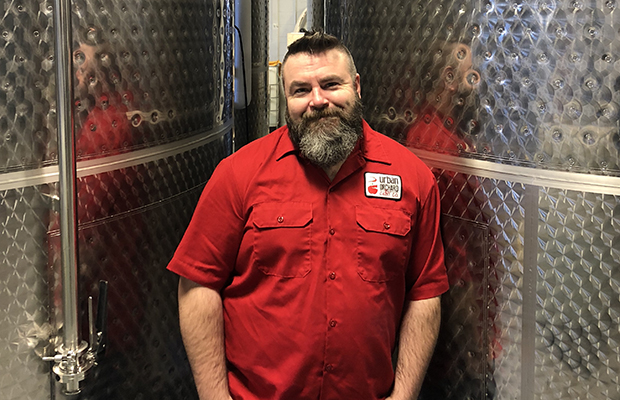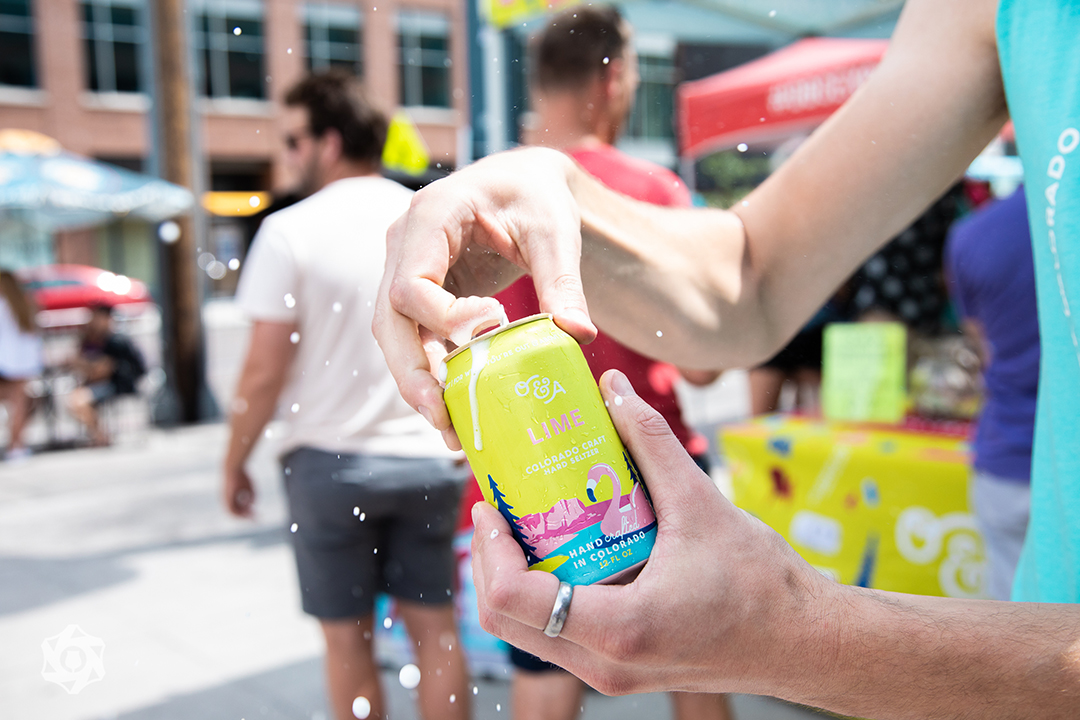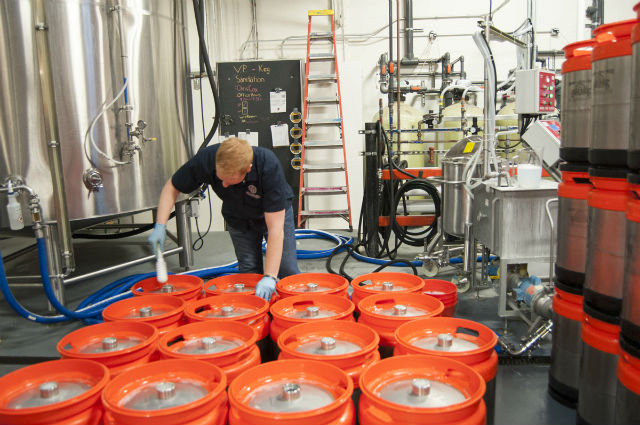
Testing new recipes in a smaller brewery can be challenging, especially when working with limited batch sizes. Avoiding excessive waste while still refining and further developing a recipe requires creative solutions and a methodical approach. Many of the largest breweries started this way and still utilize small-batch techniques to improve a product.
When developing a new recipe, ensuring scalability from a small pilot batch to full production — no matter the size difference — requires careful planning and consideration of multiple foundational elements.
Ultimately, whether you are using a homebrew setup, pilot system, or split-batch testing, smaller breweries can still experiment effectively by focusing on incremental changes, maintaining control over key variables, and leveraging available resources to minimize waste while refining recipes.
Vinnie Cilurzo of Russian River Brewing pointed out the significance of brewing within the constraints of your production equipment from the outset.
“If you can’t do a step mash on the larger, actual brewing equipment, don’t employ one on the test batch,” he pointed out.
Many homebrewers who transition to professional brewing find that their small-scale techniques don’t transfer well to larger systems. Taking meticulous notes at the pilot stage is also essential.
Cilurzo added that he remembers how his team worked with a homebrew system before upgrading to a five-barrel pilot brewery.
“The 5 bbl system is certainly closer to our two production brewhouses, but we made the homebrew system work, and I know a lot of breweries that only have a homebrew system to test a new recipe with,” he said. “Heck, many don’t even do a homebrew and just go for it,” he said.
He pointed out that even small-scale test batches provide valuable insights, even if they aren’t a perfect replication of the final product.
“Even on our 5 bbl system, most times the recipe turns out even better on the full-scaled-up recipe,” Cilurzo said.
Consistency in raw materials is another key factor in this, explained Will Kmetz of Fat Head’s Brewery.
“We try to prioritize using the same raw materials we would use for our production beers, whether that’s malt, hops, yeast, or other adjuncts all the way down to exact lot numbers,” Kmetz said.
Despite differences in manual versus automated brewing systems, maintaining ingredient uniformity allows the flavors and aromas to translate effectively across scales.
Having some sort of pilot brewery within the same facility as the production brewery can help in this comparison, ensuring the final product remains true to the original vision.
Cost considerations play a pivotal role in determining whether a recipe is viable to scale.
Kyle Fjalstad of The Original 40 Brewing Company said that cost management in pilot batches is crucial.
“When making a smaller batch of beer, it is easier to rationalize purchases of premium grain or more expensive hop products because you don’t have to buy as much of it,” he said.
However, keeping costs under control early in the process makes scaling a recipe more straightforward and financially viable.
Ingredient availability is another crucial factor in recipe scalability, as Brad Bergman of Sycamore Brewing points out.
“Unique, esoteric ingredients may be doable at small scale, but due to cost, availability, or practicality, these same ingredients may not make sense to use at larger scale,” he said.
Additionally, process scalability must be considered.
“You certainly don’t want to design a recipe that requires unique methods only achievable at a small scale, that will make scaling the recipe a big challenge,” he warns.
Bergman also said to leave room for adjustments during future production.
“You can always add more later, but it’s a lot harder — if not impossible — to remove elements once they’re added,” he said.
But really, beer style and flavor profile must align with practical considerations. Tony Hansen of Short’s Brewing said that the first step is evaluating whether a recipe generates the desired excitement and flavor profile.
“If the feedback is great, then it becomes a practical and logistical exercise that involves taking into account the price and type of ingredients used and how they’ll act on a production scale,” he said.
Key questions after that include whether the ingredients will make the beer too expensive for the market, if they are problematic at a larger scale, and if they are shelf-stable or require additional quality control measures.
Finding ways to experiment efficiently within the constraints of your existing equipment is key.
Fjalstad offered suggestions for brewers to short-fill a fermenter and split some wort off of a larger batch where you can ferment or hop differently while utilizing small half-barrel brinks to test different hops or adjuncts. Even small-scale trials that aren’t exact matches to full-scale production can offer valuable guidance.
“You can still gain insight from smaller experiments,” he said.
Christopher Leonard, brewmaster and operations manager at Heavy Seas Beer, stressed the importance of focusing on one variable at a time when testing.
“Don’t try more than one ‘new thing’ at a time,” Leonard said. “If you are testing a new fermentation process, for example, use a trusted recipe. Employ as many ingredients and methods as you can with which you are competent and confident.”
READ MORE: Everything Revolves Around Quality Control
Leonard also suggests starting with a clear vision of the finished product and working backward, identifying factors like dryness and how it will be achieved through mash composition, yeast selection, or enzyme additions.
When scaling up, he said efficiency changes are a common pitfall.
“We usually find the final macro product to be a better execution of our vision because we have so much more control of temperatures, times, etc.,” he said.
Hansen takes a methodical approach to avoid excessive test batches.
“Start with an available beer with a similar base to the base recipe you are working on, then add any possible ingredient additions in small amounts to dial in the flavor,” he said.
For Kmetz, consistency and incremental adjustments are key, and compares the process to applying the scientific method.
“When approaching a new IPA, we reference a plethora of data including recipes, taste panel info, and lab/QC data from beers we’ve brewed before,” he said. “If we haven’t brewed that style before, we reference online resources or peers in the industry and build a recipe using that information as a guide.”
Bergman said there are many benefits in investing in a pilot system, even if it’s small.
“Best case? You invest in a small kettle (could be as small as a 5-gal pot with a cheap propane burner), pull wort from your production brewhouse, add DME or water as necessary to hit target gravity, add your hops/ingredients as you want, then knock out through a small heat exchanger to the pilot fermentor,” he said.
Controlling fermentation temperature at a small scale is crucial.
“That will go a long way toward producing beer that can match the production scale,” he added.
While there is no single formula for seamlessly scaling a beer, most who talked with Brewer agree to recognize the importance of vision, equipment calibration, process control, and ingredient management.
One of the most critical missteps brewers can make, according to Cilurzo, is failing to establish a clear vision of the final beer. He said to work at having a precise sensory goal from the outset, which can streamline the process, allowing for minor tweaks along the way without losing sight of the desired outcome.
Hansen said that variations in water chemistry, extraction efficiency, and post-production processes such as filtering and pasteurization can impact the beer’s final profile so adjusting for these discrepancies is essential to maintaining consistency between small-batch testing and large-scale production.
One common misconception in scaling a recipe follows a simple linear progression. Kmetz and Bergman warn that each brewing system functions differently, and tank dynamics shift dramatically from a small test batch to a large-scale operation. By keeping processes as uniform as possible, especially on the cold side, you can pinpoint which recipe adjustments are truly impacting the beer.






Be the first to comment